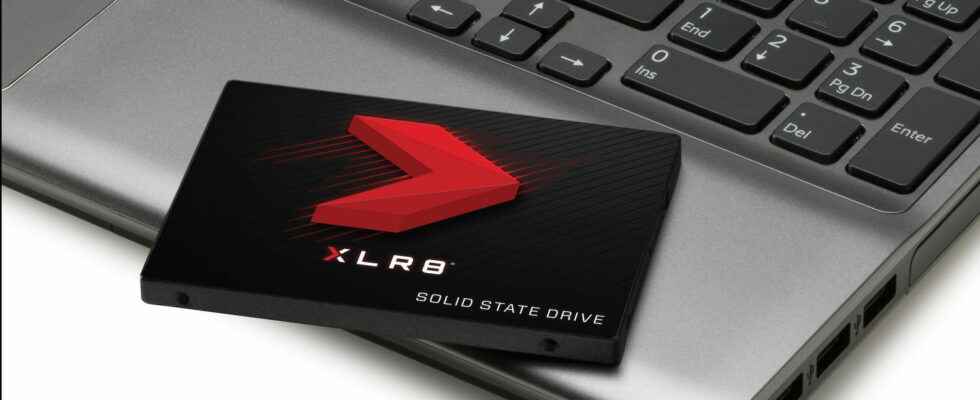Increasingly affordable, SSDs are very advantageously replacing hard drives in computers. Because with much higher speeds, they significantly speed up the opening and saving of files for much smoother use.
SSDs (solid-state drives) are electronic (solid-state) storage systems. Unlike traditional mechanical hard drives (HDDs) which use rotating magnetic platters, they store data on flash memory chips, such as microSD or CompactFlash type memory cards. SSDs have several advantages over HDDs. More resistant (they are insensitive to shocks), silent and less energy-consuming, they are also much more efficient, with much higher data transfer speeds. So when they host the operating system, they allow the computer to boot up in seconds.
SSDs can be internal or external. Internal models are installed inside laptops or desktops, often via a “cradle-adapter”, for format issues – especially when it comes to replacing a format 3 hard drive .5 inches.
There are indeed three internal SSD formats. The most common is the 2.5-inch format, mounted in a small case that is bulky equivalent to that of a 2.5-inch disk, and equipped with a Sata interface. Inside very thin ultrabooks and laptops, there are small card SSDs in mSATA format, also equipped with a Sata interface. Finally, there are also on-board SSDs in M2 format, which mount in a PCI Express slot, which improves data transfer speed by being connected directly to the computer’s motherboard.
External SSDs are transportable and make it possible to extend the storage capacity of a computer, but also to secure its sensitive data. They are covered with a protective plastic, metal or rubber shell. The latest models connect to a computer via the USB 3.1 Gen 2 Type-C interface, with a transfer speed of more than 500MB/s. Older USB interface models are tending to disappear.
SSDs offer less capacity than HDDs. On the market, there are models from 120 GB to 2 TB. The most common have a capacity of 500 GB or 1 TB. Large capacity SSDs (more than 4 TB) are still rare and expensive (more than 100 euros for a 4 TB model).
Last point to take into account on SSDs: the technology used for flash memory. There are three main ones:
- SLC (Single Level Cell): each elementary cell can store a single bit.
- MLC (Multi Level Cell): each cell can store two bits.
- TLC (Triple Level Cell): each cell can store three bits.
We can add the very recent MLC V-NAND developed by Samsung, which stores four bits per cell. The greater the number of bits per cell, the greater the capacity of the SSD. But performance also drops, as does price and lifespan. Indeed, SSDs are not eternal: they only support a finite number of write and erase cycles. No need to worry though: they are functional for several years, and last at least as long as a computer. And some manufacturers guarantee them for five years, announcing a life of more than ten years in practice.
Finally, note that like hard drives, SSDs can be used with all kinds of devices and in all environments, on PC (Windows or Linux) as on Mac, or with mobile devices, such as simple USB drives, capacity and speed on top of that.
